And, the mysterious origin of the popular name for the Pan paniscus ape.
By Jeannette De Wyze
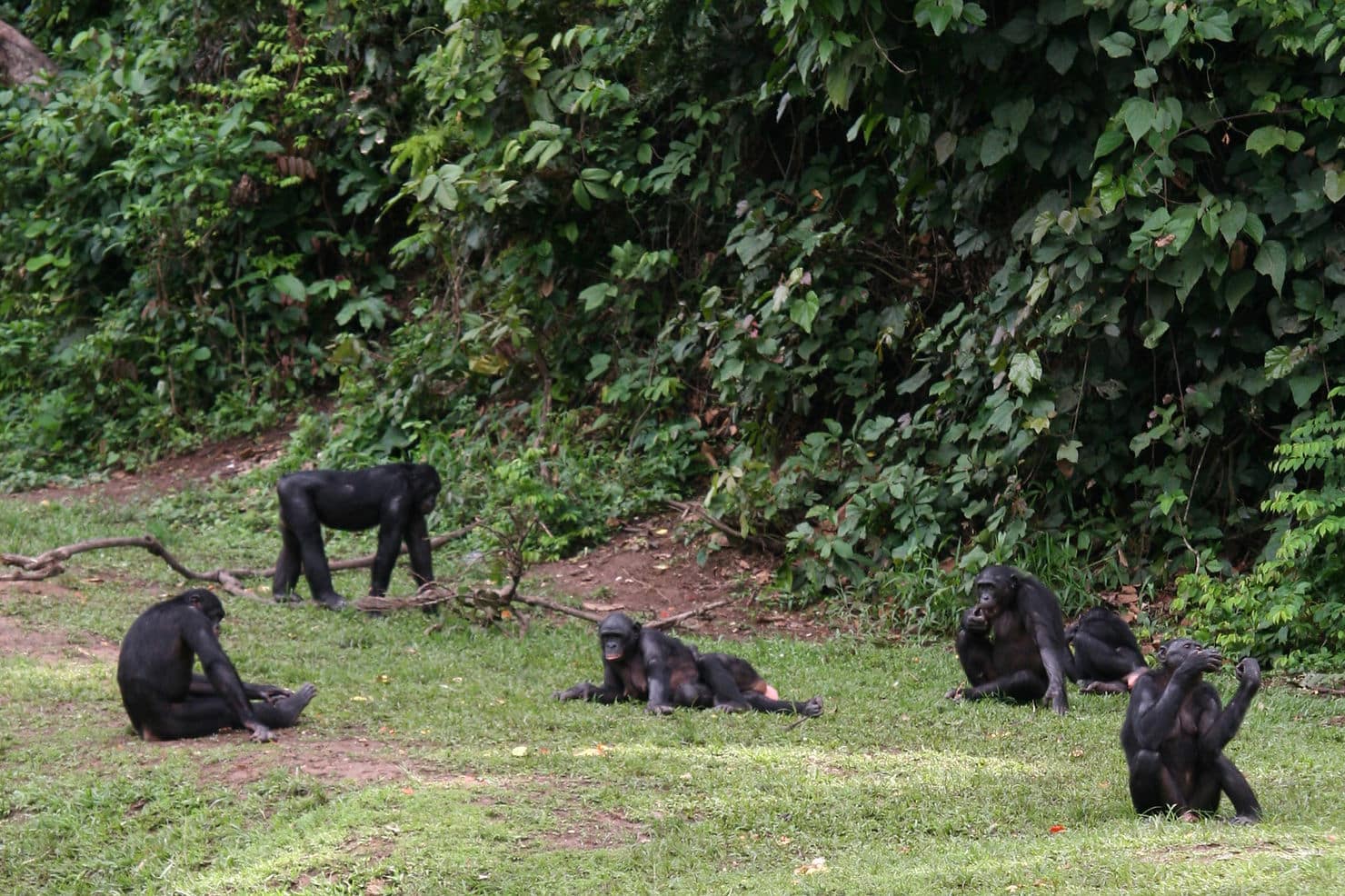
You say bo-noh-bo, I say bahn-obo? No problem! (Just don’t call this very special primate a pygmy chimpanzee.)
Either pronunciation of the word bonobo is acceptable, according to many dictionaries, although folks who emphasize the second syllable may be winning out. The New American Dictionary lists that pronunciation exclusively, and some of the world’s leading primate scientists and conservationists (Frans de Waal, Claudine André, Sue Savage-Rumbaugh) favor bo-noh-bo. So does the American clothing brand, Bonobos, which has even produced a comic video about the elocutionary challenge of saying the company’s name.
No one suspected the species existed until the late 1800s.
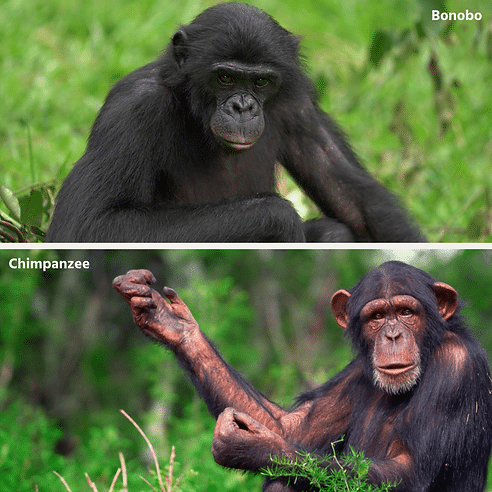
In an online philological forum, one recent poster offered this explanation for the confusion:
“I think this is a word that was spread mainly by writing and everybody just guessed randomly at how to pronounce it.”
A Late Discovery
Where the name originated is a more interesting – if murkier – question. No one suspected the species existed until the late 1800s and early 1900s, when reports from both the Congo and captivity began to hint at the existence of apes similar to but distinctive from chimpanzees. In 1929, the German zoologist Ernst Schwarz, studying three skulls and a skin found in a Belgian museum, announced the existence (1) (2) of a new subspecies of chimpanzee, one he named Pan satyrus paniscus.
A New Species is Established!
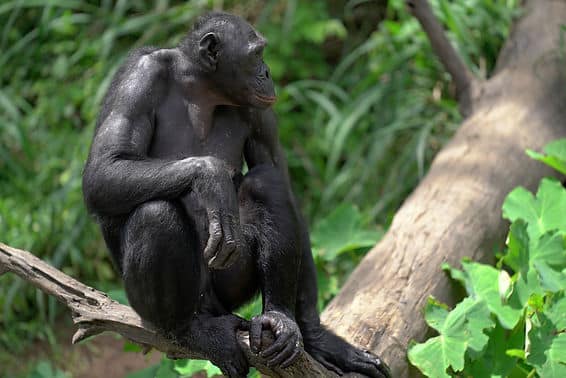
In 1933, the American anatomist Hal Coolidge argued that the novel creatures were a separate species he dubbed Pan paniscus. (3) Coolidge based his arguments on a skeleton and skin of a female owned by the American Museum of Natural History. The European Association of Zoos and Acquaria’s account of this history (4) notes that, ironically, the specimen Coolidge was working with was the smallest of all the specimens that had been collected, which led to the name pygmy chimpanzee.
People referred to the “new” species as pygmy chimpanzees (alternatively, dwarf or black-faced chimpanzees) well into the 1990s, although as early as 1954 the researchers who did the first behavioral study of the species, Eduard Tratz and Heinz Hock, were arguing that members of Pan paniscus differed so markedly from chimpanzees (Pan troglodytes), they deserved their own genus (they suggested Bonobo paniscus) to better distinguish the two. (5)
That change never occurred, but after 1989, bonobos, chimpanzees, and gorillas were all reclassified to place them in the same taxonomic family as humans (Hominidae). Since then some scientists have suggested bonobos and chimpanzees are so closely related to humans, they actually belong in the same genus (Homo). Others have argued it’s humanity that should be reclassified to become Pan sapiens.
History of the Name ‘Bonobo’
While we wait to see if that change ever occurs, the etymology of “bonobo” remains obscure. The Oxford English Dictionary says, “It is often suggested that the name was taken from a shipping crate containing a specimen sent to Belgium in the 1920s, which is said to have been inscribed with the name of Bolobo (a port on the Congo river), with a letter obscured at the time of arrival. However, this [claim] cannot be substantiated, and the origin of the suggestion is difficult to trace.”
When Tratz and Heck suggested the scientific name of Bonobo paniscus, they explicitly said the word bonobo was taken from a local language. One source, a Belgian missionary and scholar of Bantu languages, is said to have connected the word bonobo to a proto-Bantu root meaning “ancestor.” But that explanation has not won wide acceptance, nor does bonobo appear to bear any relationship to other names for animals found in the Congo.
Pygmy Chimp – ‘Misleading and Demeaning’
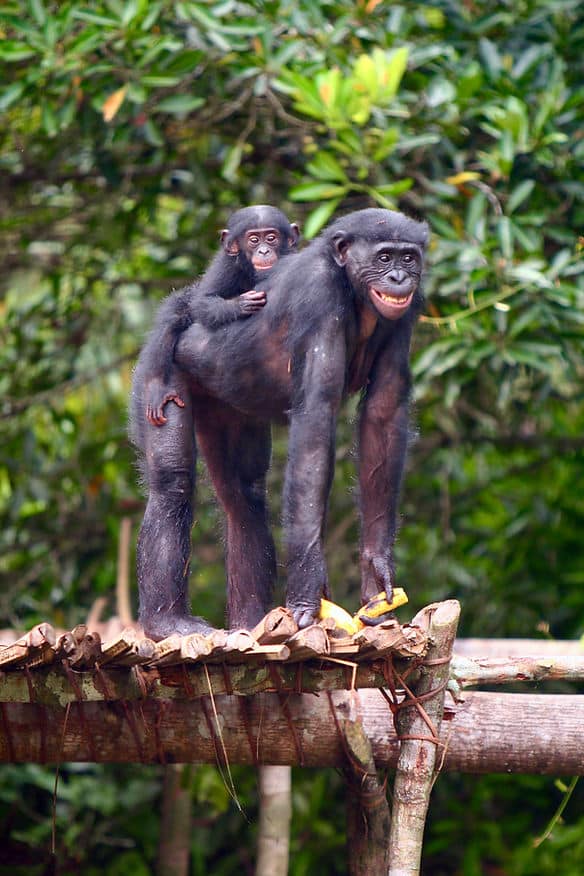
However it’s pronounced, bonobo as a popular name for the primates does appear to have won, thanks in part to the recognition of individuals like de Waal.
He writes (7) that the first time he ever saw bonobos, labeled “pygmy chimpanzees” at a now-defunct Dutch zoo, he decided that nomenclature had to change.
“It was misleading and demeaning, as if they were the poor man’s miniature chimp,” de Waal writes. “People would ask, “Why study those little chimps if you can study the real big ones?”
From then on, he made a point “of always calling these apes ‘bonobos’ despite the resistance of journal editors and blank stares from the general public.” The renowned primatologist adds, “The new name took hold owing to its happy ring, which befits the species’ nature.”
Jeannette De Wyze was a journalist at the San Diego Reader, where she wrote cover stories and news articles for 30 years. Today she’s a bonobo lover and supporter and the volunteer liaison between Women’s Empowerment International and the Nyaka Grannies Project in Uganda. She also raises puppies to be service dogs for Canine Companions for Independence and is an active blogger.
1) Ernst Schwarz (1929). Pan satyrus paniscus. Revue Zool. Africaine, 16:425, April 1,1929
2) Herzfeld C. L’invention du bonobo 2007. Bulletin d’histoire et d’épistémologie des sciences de la vie (French). 14(2):139-162.
3) Coolidge HJ. Pan paniscus. Pigmy chimpanzee from south of the Congo River. Am. J. Phys. Anthropol. 18:1-57, Sept. 1933. https://doi.org/10.1002/ajpa.1330180113
4) https: //www.eaza.net/assets/Uploads/CCC/BPG-2020/Bonobo-BPG-final-version-2020.pdf
5) Tratz E, Heck H (1954). Der Afrikanische Anthropoide “Bonobo,” eine neue Menschenaffengattung.Saugetierk. Mitt., 2: 97–101.
6) De Waal F. Different. Gender through the eyes of a primatologist. Norton 2022: 111-112.
